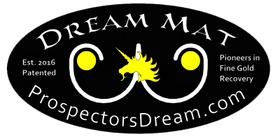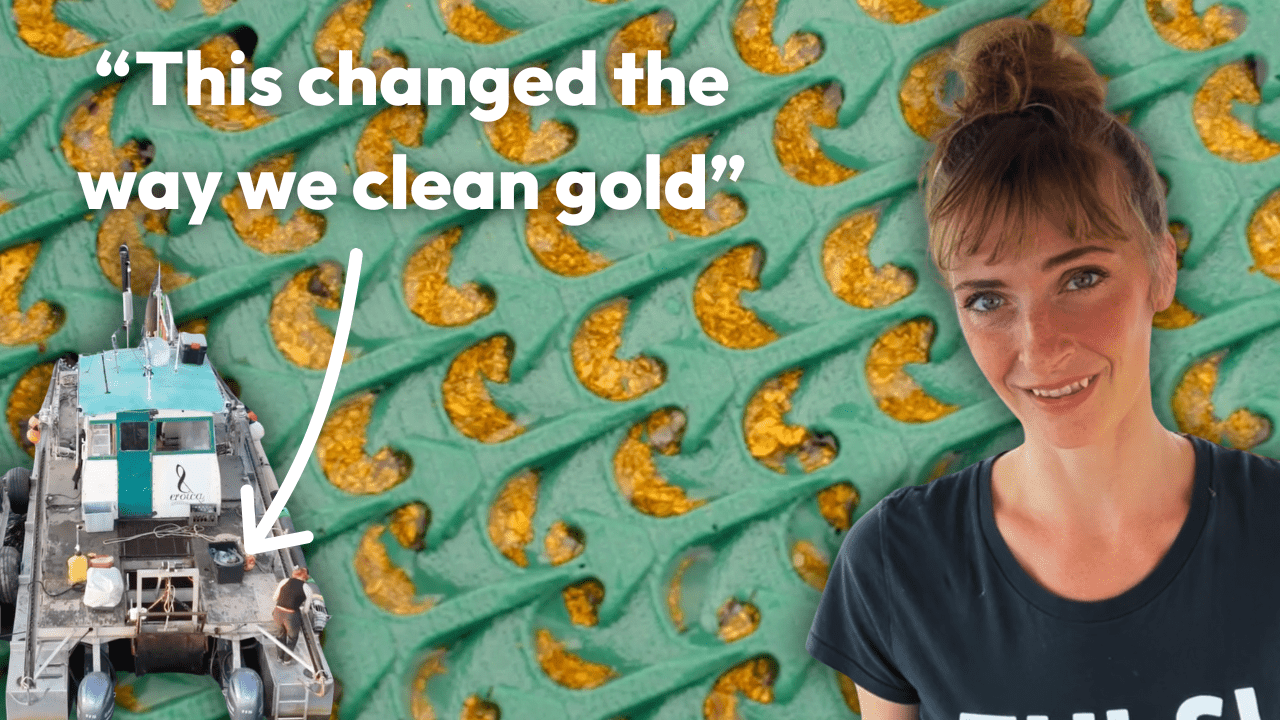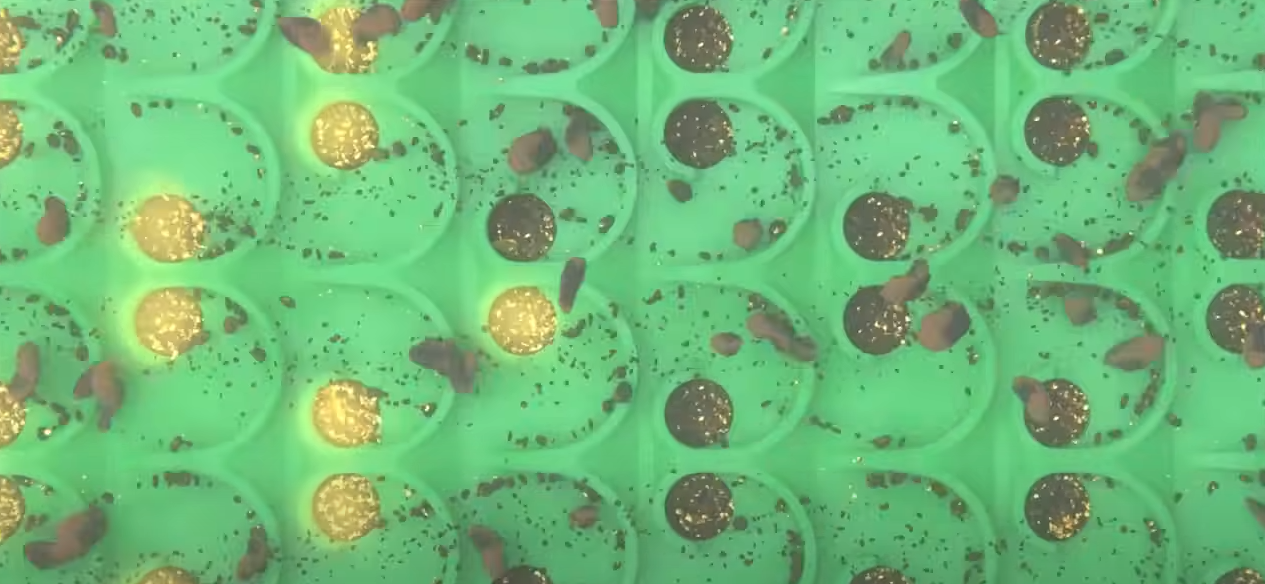A Miner's Take on Dream Mat
A seasoned gold miner shares her experience with a new technology that challenged her skepticism and improved her operation's efficiency.
A Skeptic in a Traditional World
In my 12 years as a professional gold miner I’ve seen a lot of new gold cleaning tools hit the market. Like most commercial miners, I’m skeptical of anything “new” in this business.
We still recover placer gold in much the same way we did 150 years ago, and I’d bet it doesn’t look much different in 150 years from now. But every year it seems like there is a fresh crop of entrepreneurs ready to promote shiny new devices that promise to eat up paydirt and spit out clean gold.
Usually these inventions are new twists on old concepts like the sluice box, the jig, the wheel, or the shaker table. And unfortunately for small commercial miners, these devices are also usually designed for the hobbyist prospector market. That means flimsy metal, weak plastic, and small footprints. They’re just not built for small commercial operations that need to process hundreds of pounds of heavy black sands and gold in a couple of hours.
An Innovation That Worked
But every 10 or 20 years something truly innovative comes along and transforms the way an operation like ours can recover placer gold. I don’t mean that black sand goes in and perfectly clean gold comes out. In realistic terms it means increasing speed, improving gold recovery, and limiting your time on the pan getting gold “clean enough to sell.”
Dream Mat was one of those transformations.
I started using Dream Mat a few seasons ago when I picked up the Micro Mat for our Gold Cube, another transformative piece of equipment that preceded the Dream Mat by a few years. Like the Dream Mat, the Gold Cube is the rare placer gold recovery tool that could serve both the prospector market and small commercial miners. It could process 100 pounds of heavy concentrates quickly and substantially reduce time on the pan.
Just as important, it’s a fraction of the price of a commercial shaker table, the gold recovery rate is acceptable, and it’s small enough to stowaway between cleanups.
From Frustration to Revelation
My one issue with the cube is it always came with this conveyor belt-type matting that was a pain to clean and didn’t hold as much gold as I liked.
We’re cleaning the trays dozens of times a season. It took a lot of splashing and scrubbing to get them clean - we started keeping a cleaning brush on hand to scrub them down - and the gold migrates quickly down the tray when you’re putting dozens of ounces through in a short time.
The Dream Mat was a revelation. The cups would fill up to the brim with gold, leaving just a little black sand, and the concentrate rinsed right out of the smooth plastic cups. There were also three sizes to test so we could dial in the amount and type of concentrates we wanted to keep in the trays.
This saved us a ton of time on the final panning, which meant we could get cleanup results faster and adjust our mining strategy in real time. No more setting aside two full days for a cleanup. We could get an approximate weight from the top of our sluice box in just a few hours.
The High-Stakes Dredge Test
It wasn’t long before we filled our whole gold cube with Dream Mat and started looking around for more. Dave, the owner of Prospector’s Dream, called me and told me he was bringing a new dredge mat to market. The dredge mat his team designed had thicker rubber and larger cups designed for use in small commercial operations. Would we use it in the sluice box on the Eroica?
Now this was more of a risk. Changing our cleanup process is one thing. If a new gold recovery device doesn’t work, you still have all your gold in a bucket. You just try again with something different. But if the Dream Mat didn’t work in our dredge we risked dumping that gold back in the Bering Sea. It hurts our divers, our profit margins, and the relationship with the lease owner.
We decided the lowest-risk way to test the dredge mat was to put it in the lowest 4 feet of the box where we recover a small fraction of our gold - less than 5% - figuring we had the opportunity to be pleasantly surprised by the results. And surprised we were when larger nuggets started immediately appearing in the Dream Mat.
The mat caught several nuggets weighing up to 7 grams in just a few dives.
Now you have to understand that we focus on the fine gold, because that’s where the money is in the Bering Sea. We, like all dredges, screen our material before it hits the carpets.
We screen first to ¼” in the top box and then to ⅜” - protecting our expanded metal riffles and miner’s moss from bigger boulders and rocks in order to
The unfortunate result is that nuggets would roll over the screen and get dumped back in the ocean, or would squeeze through the ⅜” screen and roll over the tops of the expanded metal.
So far the investment in the Dream Mat is an exciting one. We’re expanding the sluice box to slow the water down further and I hope to see Dream Mat catching more nuggets and continuing to surprise us in a good way.
Finding the Balance: Tradition vs. Innovation
Gold mining is a mix of tradition and innovation. The problem is, always, in the balance.
In a slow-changing and capital-intensive business like placer mining, I think operators should be focused on about 95% tradition.
Unlike the technology industry, new innovations come around very slowly in placer mining. The fastest way to lose all your money (with the rare exception of only the most brilliant and experienced miners) is to try to do something that is 100% innovation. I see it every year on the Bering Sea.
Some operator with no experience invents a shiny new (and undoubtedly expensive) gold dredging method that they’re sure is going to harvest all the gold in the Bering Sea in record time. Those operators have a 100% failure rate - and quickly.
The only way for the average person to succeed in this business is to use tried-and-true mining methods and do all the “unsexy” tasks of developing and retaining a good crew, managing costs, hitting all your mining windows, and minimizing operational downtime.
But while the smartest miners anchor themselves in what works, they’re always innovating on the margin. They’re testing new ways to find and recover gold and using technology to go faster and operate more efficiently.
Here is a small list of incremental innovations in the last 20 years of Bering Sea Gold dredging:
- The breaker flap that eliminates thrust from the sluice box
- Free-spool anchoring
- Pumping hot water into diver suits and using diver-to-tender communications
- Diver-operated throttle controls
The problem with not testing and innovating new ways of doing things is that even small innovations compound over time. Taken individually, these innovations only marginally improve an operation. But taken together, these new ways of operating are what constitute a modern day Bering Sea diver dredge, and without any of them it would be almost impossible for an operation to be a top performer in the modern industry.
I believe that Dream Mat is one of the innovations that can help placer miners improve both speed and recovery rates, and I’m proud to partner with them.


